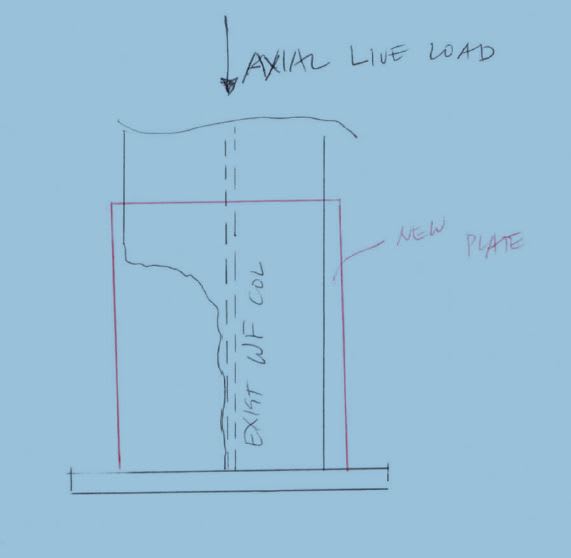AskTooMuch
Petroleum
- Jan 26, 2019
- 276
I have an existing steel column that has part of the flange missing due to corrosion.
I already had it sandblasted and will paint it with epoxy paint.
I know about needing to shore this column first or the plate will not resist dead load.
My question is about axial load, do I use the new Ax with plate on it resisting all the axial load?
If I use WT instead of plate (just saying as example), will all area (WF + Wt) resist the axial load?
Can I weld across the column flange (plate will be welded all around) for axial load?

I already had it sandblasted and will paint it with epoxy paint.
I know about needing to shore this column first or the plate will not resist dead load.
My question is about axial load, do I use the new Ax with plate on it resisting all the axial load?
If I use WT instead of plate (just saying as example), will all area (WF + Wt) resist the axial load?
Can I weld across the column flange (plate will be welded all around) for axial load?

